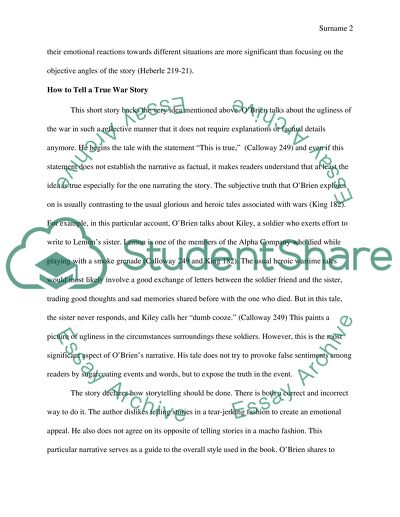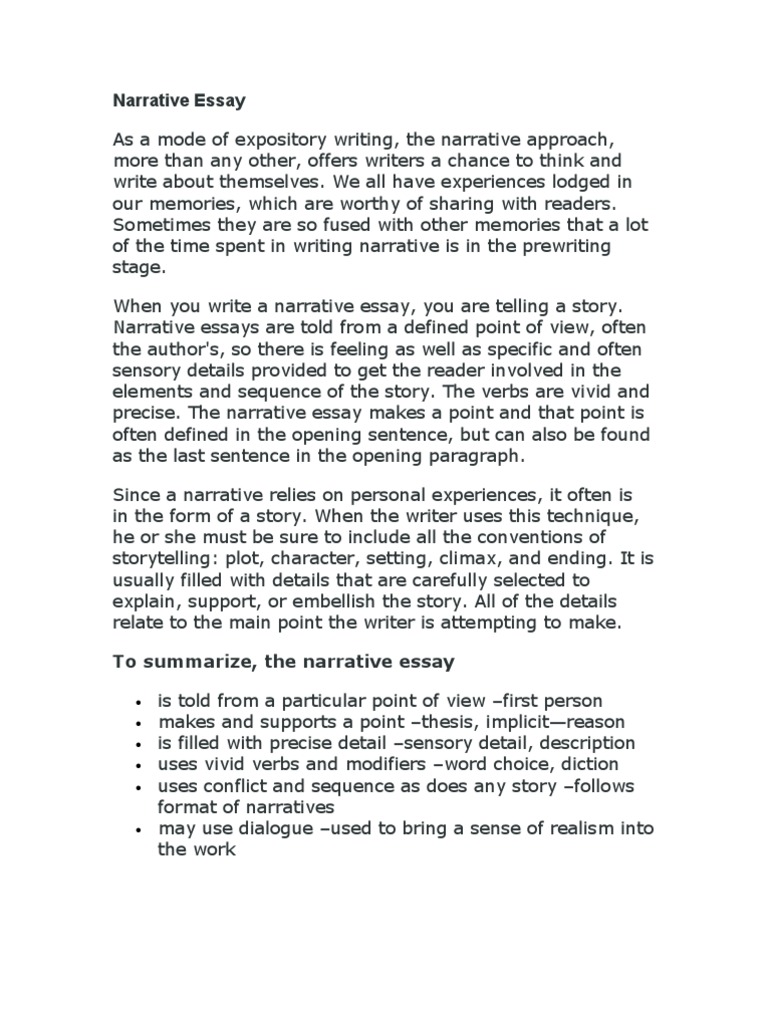
That is why you should develop a good structure for your essay, write a compelling story, and use the common guidelines for writing an essay to get the highest grades. Search for inspiration wherever you can, know the specific requirements given by your instructor, and keep these requirements in mind while writing Apr 10, · Get a Perfect Narrative Essay from Pros! Storytelling is a skill that doesn’t come naturally. It takes time and effort to acquire it, which is why writing a good narrative essay can be so challenging sometimes. Hopefully this guide will help you get a better idea of how to write In the case of the creative essay, there are numerous types of papers which borrow or share some of their elements to it as was previously mentioned while we were exploring how to combine the art of storytelling with academic writing. So without any further adieu, here are some of the creative essay
How to write the best creative essay in no time: tips & paper ideas
Even bestselling novelists stumble over them. And if you master these simple principles for shaping great stories, your writing will be transformed forever. This is amazing! Because you might be surprised by how more careful attention to causation will improve your writing. As a fiction writer, you want your reader to always be emotionally present in the story. Stories that move forward naturally, cause to effect, keep the reader engrossed and flipping pages.
If you fail to do this, it can confuse readers, kill the pace and telegraph your weaknesses as a writer.
You might write:. Then he reads on. Oh, I get it, the killer is on the other side. If you find that one sentence is serving to explain what happened in the sentence that preceded it, you can usually improve the writing by reversing the order so that you render rather than explain the action.
Cause: The killer is on the other side of the door. Effect: She locks it. Of course, most of the time we leave out the words because and soand these are very simplified examples—but you get the idea.
Remember in rendering more complex scenes that realizations and discoveries happen after actions, not before them. Continually move the story forward, rather than forcing yourself to flip backward to give the reason something occurred. Build Your Novel Scene by Scene will offer you the impetus, the guidance, the support, and the deadline you need to finally stop talking, start writing, and, ultimately, complete that novel you always said you wanted to write, how to write a storytelling essay.
Click to continue. He began to doodle. Suddenly he gulped and stared around the room, embarrassed, when the teacher called on him to explain cause and effect structure.
This paragraph is a mess. As it stands, at least seven events occur, and none are in how to write a storytelling essay logical order. Here is the order in which they actually happened:. With all of that said, there are three exceptions, three times when you can move from effect to how to write a storytelling essay without shattering the spell of your story.
Immediately, the reader will be curious who is screaming, at whom she is screaming, and why. to start that way. If this same sentence appeared in the middle of a scene in progress, though, it would be wiser to move from cause to effect:.
He told her he was in love with another woman. The second exception is when one action causes two or more simultaneous reactions. In the paragraph about Greg, he gulps and looks around the room. Because his embarrassment causes him to respond by both gulping and looking around, the order in which you tell the reader he did them could go either way.
How did he do that? But precisely the opposite is true. Readers approach stories wanting to believe them. Readers have both the intention and desire to enter a story in which everything that happens, within the narrative world that governs that story, is believable.
Writing Mistakes Writers Make. Readers want to immerse themselves in deep belief. We need to respect them enough to keep that belief alive throughout the story.
The reader will begin to either lose interest and eventually stop reading, or will disengage from the story and begin to look for more inconsistencies—neither of which you want her to do. And readers stop believing stories when characters act inexplicably. In a scene in my first novel, The Pawnmy protagonist is interviewing the governor of North Carolina, how to write a storytelling essay, and the governor is responding oddly.
Then the reader will agree, Ah, good! I thought so. Rather than drive the reader away how to write a storytelling essay identifying with the protagonist, this was a way of drawing the reader deeper into the story. Remember: Always give the reader what he wants, or something better. At the heart of story is tension, and at the heart of tension is unmet desire. At its core, a story is about a character who wants something but cannot get it.
As soon as he gets it, the story is over. So, when you resolve a problem, it must always be within the context of an even greater plot escalation. This is usually a good idea; however, all too often the writer is then forced to spend the following pages dumping in background to explain the context of the hook. How to Push Your Characters to Their Limits. Tension drives a story forward. When tension is resolved, the momentum of the story is lost.
Somewhat similarly, plot is simply the casually related series of events that the character experiences as he moves through a crisis or calling into a changed or transformed life. So you might include chase scene after chase scene, but eventually the reader couldn't care less that one car is following another down the street.
The interplay of these two struggles is how to write a storytelling essay until, at the climax, the resolution of one gives the protagonist the skills, insights or wherewithal to resolve the other. However, readers today are very astute and narratively aware. Plot Twist Story Prompts. The story needs to progress toward more and more conflict, with more intimate struggles and deeper tension.
The plot must always thicken; it must never thin. Because of that, how to write a storytelling essay, repetition is the enemy of escalation. Every murder you include decreases the impact that each subsequent murder will have on the reader. Every explosion, prayer, conversion, sex scene means less and less to the reader, simply because repetition, by its very nature, serves to work against that escalation your story so desperately needs. Strive, instead, to continually make things worse for the protagonist.
All three of these storytelling secrets are interwoven. When every event is naturally caused by the one that precedes it, the story makes sense. Debut author Jennifer Boresz Engelking discusses what led her to write her historical nonfiction book Hidden History of Lake County Ohio and how research gave her a new appreciation for her hometown.
Write a poem every day of April with the April Poem-A-Day Challenge. For today's prompt, write an animal title poem. Popular lecturer and biographer Joshua M. Greene discusses the hardship of writing the biographies of Holocaust survivors, and the biography that convinced him to continue writing. For today's prompt, write an ekphrastic poem. Congratulations to the winners of the first annual Writer's Digest Personal Essay Awards!
com, read movie reviews from cinephile Tom Stemple. Rosanne Welch about trailblazer screenwriter Anita Loos, and much more! Write Better Fiction. Short Story. Writing Techniques.
Write Better Nonfiction, how to write a storytelling essay. Personal Writing. Historical Books. Travel Books. Business Books. Humor in Nonfiction. Creative Nonfiction. Write Better Poetry. Poetry Prompts. Poetic Forms. Interviews With Poets. Why I Write Poetry. Poetry FAQs. Get Published. Build My Platform.
Find a Fiction Agent. Find a Nonfiction Agent. Write My Query. Sell My Work. Business of Writing. Breaking In.
Writing a Personal Narrative: Brainstorming a Story for Kids
, time: 2:48Storytelling Essay Examples | Bartleby

Dec 05, · Storytelling can be regarded as the foundation of contemporary literature. A narrative is a fundamental element of any literary, cultural, or historical discourse. However, a narrative shouldn’t be regarded as a simplified version of literature Apr 10, · Get a Perfect Narrative Essay from Pros! Storytelling is a skill that doesn’t come naturally. It takes time and effort to acquire it, which is why writing a good narrative essay can be so challenging sometimes. Hopefully this guide will help you get a better idea of how to write In the case of the creative essay, there are numerous types of papers which borrow or share some of their elements to it as was previously mentioned while we were exploring how to combine the art of storytelling with academic writing. So without any further adieu, here are some of the creative essay
No comments:
Post a Comment